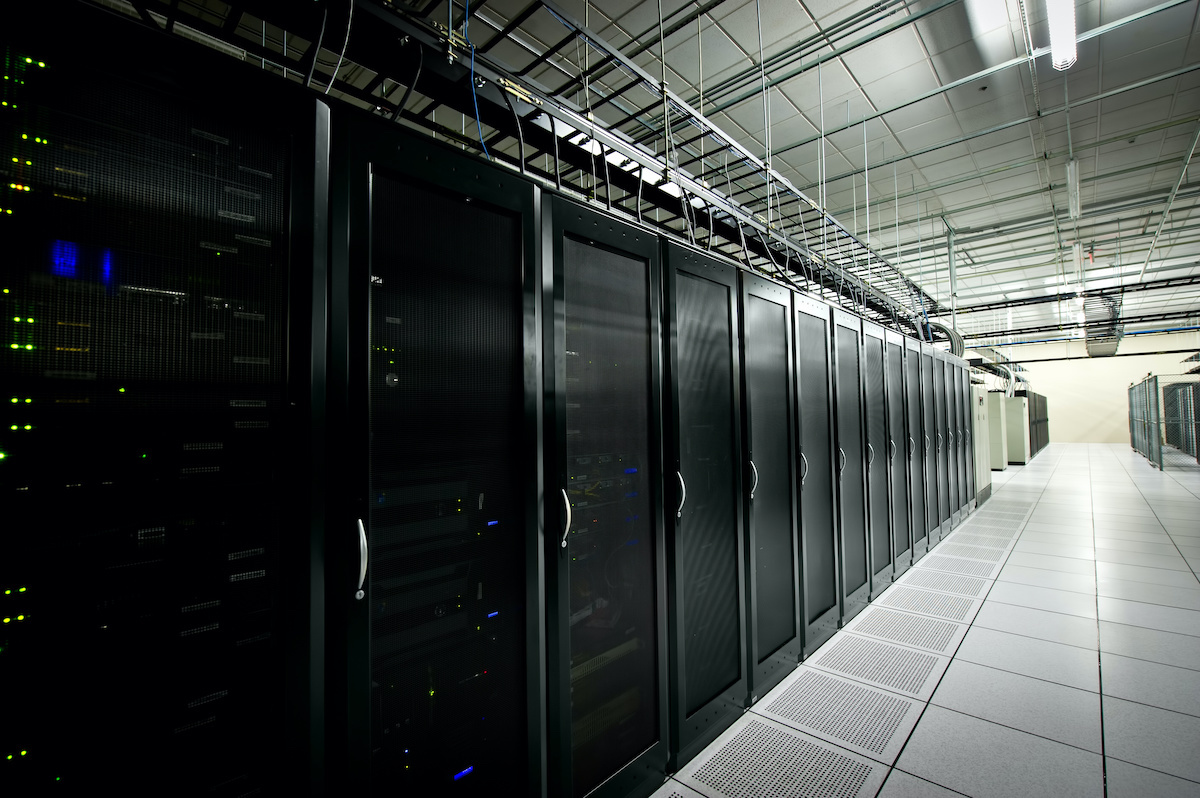Introduction to International Data Center Standards – Part 223 min read

This is the second installment of a 2-part series introducing international data center standards. Having presented the currently available standardized Key Performance Indicators (KPIs), published by the International Standards Organization (ISO) in the first installment, this article will present those international standards that reference data center design and built infrastructures.
Introduction to EN 50600 – The European Data Center Standard
CENELEC is designated as a European Standards Organization by the European Commission and is the European Committee for Electrotechnical Standardization. With this remit, CENELEC is responsible for European standardization in the field of electro-technical engineering and has the objective of producing a set of standards for all shapes and sizes of data centers. These may range from one or more cabinets in an existing building to dedicated “stand alone” structures which may comprise multiple buildings. These standards also recognize the very diverse nature of data center business models and the complexities of configuration and ownership of the information technology and network telecommunications equipment that may be hosted.
CENELEC works alongside CEN, the European Committee for Standardization and CLC Technical Committee 215 WG3 is responsible for the development of EN 50600 series of standards. This committee with the national members, has developed the EN 50600 Standard Series, which has been published and continues to be updated.
The fact that this is a European Standard does not limit its use to European data centers as the standard applies principles of design and management of data centers that are common globally. In addition, European standards are less prescriptive than many national standards as they need to work across all the different European nations. The result is that the key elements of this standard can be applied globally and consistently.
The EN 50600 series enables the critical infrastructures within a data center to be designated as having a defined level of “Availability”. EN 50600-1 references these designations in order to define an overall “availability” level. Other standards in the series simply require conformance to a set of requirements without an “availability” level designation.
The full list of elements in the EN 50600 series of standards are listed below:
European Standard EN 50600 Information Technology – Data Center Facilities and Infrastructures
EN 50600-1: General concepts
EN 50600-2-1: Building construction
EN 50600-2-2: Power distribution
EN 50600-2-3: Environmental control
EN 50600-2-4: Telecommunications cabling infrastructure
EN 50600-2-5: Physical security
EN 50600-3-1: Management and operational information
EN 50600-4-1: KPIs – Overview and general requirements (ISO/IEC 30134-1)
EN 50600-4-2: KPIs – Power Usage Effectiveness (PUE – ISO/IEC 30134-2)
EN 50600-4-3: KPIs – Renewable Energy Factor (REF – ISO/IEC 30134-3)
EN 50600-4-4: KPIs – IT Equipment Energy Efficiency for Servers (ITEEsv – ISO/IEC 30134-4)
EN 50600-4-5: KPIs – IT Equipment Energy Utilisation for Servers (ITEUsv – ISO/IEC 30134-5)
50600-5-1: Data Center Maturity Model (Novated from Green Grid – In Development)
CLC/TR 50600-99-1: Energy management – Recommended Practices
CLC/TR 50600-99-2: Environmental sustainability – Recommended Practices
CLC/TR 50600-99-3: Guidance to the application of EN 50600 series
It should be noted that EN 50600 references the standardized KPIs published by ISO/IEC within section 4 of the series. This ensures that true global standards dovetail without duplication of effort or confusion over which version to apply.
EN 50600 Series Breakdown
The following information provides an outline of the framework offered by the EN 50600 series:
EN 50600-2-2 defines four levels (1 to 4) for the design availability of the power supply and distribution system of the data center;
EN 50600-2-3 defines four levels (1 to 4) for the design availability of the environmental control system of the data center;
EN 50600-2-4 defines four levels (1 to 4) for the design availability of the telecommunications cabling systems of the data center;
EN 50600-1 defines the overall availability level of a data center based on the lowest level of the three infrastructure elements detailed above.
EN 50600-2-5 defines requirements for the maintenance of physical security of data center spaces independent of the infrastructure level.
In this way EN 50600-1, -2-2, -2-3, -2-4 and -2-5 provide a comprehensive framework for assessment of the design availability of a data center. They are supported by EN 50600-2-1 and EN 50600-3-1 for building construction and operation respectively, but these are currently treated as subsidiary to availability objectives.
Use of the EN 50600 Standard for Assessment or “Certification”
It is probable that an increasing number of organizations will wish assessment of data centers against the conformance requirements of the EN 50600 series standards while others will continue to consider alternative solutions. To support the standards-based assessment approach, CLC Technical Committee 215 has developed CLC/TR 50600-99-3 which provides guidance to the application of the complete set of data center infrastructure standards of the EN 50600 series.
There is nothing to stop a 3rd Party from assessing aspects of a data center against conformance to EN 50600. The same is true for the owner or operator of a data center. The lack of any true certification system for data center renders both approaches, and any assessment against alternative 3rd party schemes, as being of equal technical status.
Self-assessment or self-declaration of conformance against the requirements outlined above is comparatively simple and may be attractive to enterprise owners. In contrast, a 3rd party assessment against those same requirements may be more appropriate for owner-operators of data centers that market their services to others, in order to demonstrate 3rd party impartiality. Self-declaration versus 3rd party assessment is therefore a “value judgement”.
The application of a EuroNorm as the basis for that assessment is clearly a step forward but the choice of self, or 3rd party assessment has to be based on the apparent and perceived value and application of the resulting assessment versus the cost of the process to be employed.
Questions are repeatedly asked about “certification” against standards and how such “certifications” compare with the numerous 3rd party products and service approaches on the market. There is a great deal of misunderstanding and misuse of the term “certification” and in general assessment or declaration are always available but not “certification”.
Standards bodies cannot prevent misuse of their standards but they are able to make transparent to those desiring “certification”, what options they have and what those standards offer regarding “certification”, and importantly what they do not. It is also important to note that standards bodies are not in a position to judge whether or not an organization offering certification meets the underlying requirements, that is the role of accreditation specialists.
One of the objectives of standardization is to enable the determination of whether or not a product, process or system meets a set of minimum requirements. The demonstration of that compliance (correctly called a conformity assessment) may be ascertained by one of three procedures described as 1st party (carried out by the manufacturer or supplier), 2nd party (carried out by the user or operator) and 3rd party (carried out by a neutral and independent body).
Standards such as those of the EN 50600 series do not define the appropriate procedure, leaving this to bilateral contracts or even national or regional legislation.
In order for 3rd Party body to offer their services they have to prove that they fulfil the conditions of the EN ISO/IEC 17000 series (especially EN ISO/IEC 17025 for testing laboratories and/or EN ISO/IEC 17065 for certification bodies), which requires those bodies to undergo an assessment carried out by an accreditation body. This assessment includes inter alia the proof of neutrality, competence, impartiality etc.
Accredited assessment to one or more documents of the EN 50600 series may be viable/possible as part of one of the schemes of EN ISO 9001, EN ISO 50001, EN ISO 14001 or the EN ISO/IEC 27000 series.
International Standards Activity Based Upon EN 50600
The demand for a genuine globally consistent data center standard has resulted in ISO/IEC JTC1 SC39 WG3 adopting the European EN 50600 standard as the basis for a new international standard currently designated as ISO/IEC TS (Technical Specification) 22237. The initial documents have been published and are available from ISO as the first editions of EN 50600-1, the EN 50600-2 series and EN 50600-3-1 as sequential parts of the ISO/IEC TS 22237 series. ISO/IEC JTC1 SC39 WG3 is now developing the TS documents into full international standards. This is the first step in the development of a full ISO Data Center Standard.
It should be noted that the ISO/IEC TS 22237 documents are currently a direct copy of EN50600 documents with exactly the same content and title, but these are currently being commented on and refined by all participating national standards bodies with membership of ISO. This will result in a full ISO/IEC Standard, rather than the current Technical Specification. The work on this commenced up publication of the TS documents so has already been underway for some time and new documents are being approved for publication.
Comments from the development of the ISO/IEC 22237 standard are being passed back to the European committee responsible for ongoing development of the EN 50600 standard to be incorporated into revised documents if appropriate. EN 50600 is a growing series of Data Center Standards which is being continually updated and improved.
Currently the following ISO/IEC Technical Specifications have been published as elements of the 22237 series;
Technical Specification ISO/IEC TS 22237 Information Technology — Data Center Facilities and Infrastructures
ISO/IEC TS 22237-1:2018 Part 1: General concepts
ISO/IEC TS 22237-2:2018 Part 2: Building construction
ISO/IEC TS 22237-3:2018 Part 3: Power distribution
ISO/IEC TS 22237-4:2018 Part 4: Environmental control
ISO/IEC TS 22237-5:2018 Part 5: Telecommunications cabling infrastructure
ISO/IEC TS 22237-6:2018 Part 6: Security systems
ISO/IEC TS 22237-7:2018 Part 7: Management and operational information
Over time it is highly likely that more and more data centers will be referencing the ISO/IEC series of standards as a global reference for both benchmarking and marketing purposes.
For completeness, additional internationally defined Technical Reports and Standards that seek to address data center related topics are listed below:
ISO/IEC TR 23050:2019
Information technology — Data centers — Impact on data center resource metrics of electrical energy storage and export – Excess Electrical Energy Factor (XEEF)
ISO/IEC TR 30132-1:2016
Information technology — Information technology sustainability — Energy efficient computing models — Part 1: Guidelines for energy effectiveness evaluation
ISO/IEC DIS 21836
Information technology — Data centers — Server energy effectiveness metric (SEEM)
ISO/IEC 19395:2015
Information technology — Sustainability for and by information technology — Smart data center
resource monitoring and control
ETSI – EN 303 470
Environmental Engineering (EE); Energy Efficiency measurement methodology and metrics for servers
Real-time monitoring, data-driven optimization.
Immersive software, innovative sensors and expert thermal services to monitor,
manage, and maximize the power and cooling infrastructure for critical
data center environments.
Real-time monitoring, data-driven optimization.
Immersive software, innovative sensors and expert thermal services to monitor, manage, and maximize the power and cooling infrastructure for critical data center environments.

Mark Acton
Independent Consultant | Non Executive Director, EkkoSense
With over 25 years of experience in the Data Centre sector industry, Mark has been a specialist in the field of Data Centre Operations for over 20 years, concentrating on the delivery of business critical services from highly reliable, world class Data Centres having 24x365 availability expectations. This has included consultancy and technical advice as well as senior management roles responsible for service delivery and both strategic and operational management within the industry. A Technical Operations Manager with extensive international experience and solid technical skills covering Data Centre Facilities Design, IT and Facilities Operational Management with Technical Consulting.
A regular public speaker, conference host and industry advisor on data centre technical issues, currently acting as consultant and Non-Executive Director for leading data centre operators and solutions developers as well as being involved in International data centre Standards development.
Airflow Management Awareness Month 2020
We’re hosting four free educational webinars throughout the month of June. Don’t miss them!







0 Comments